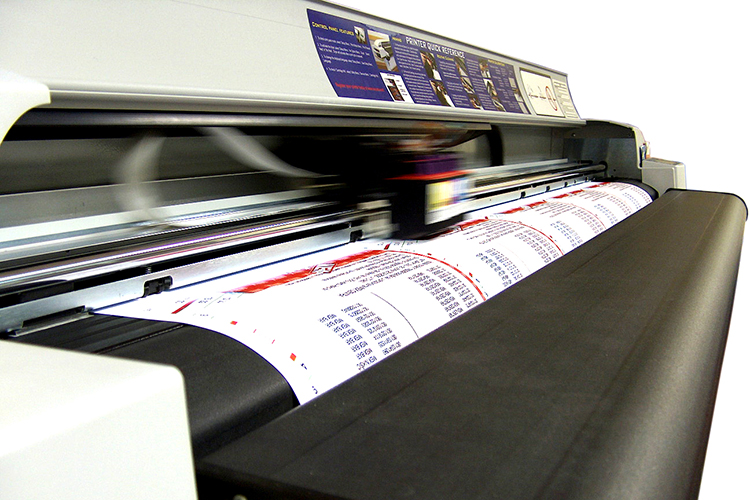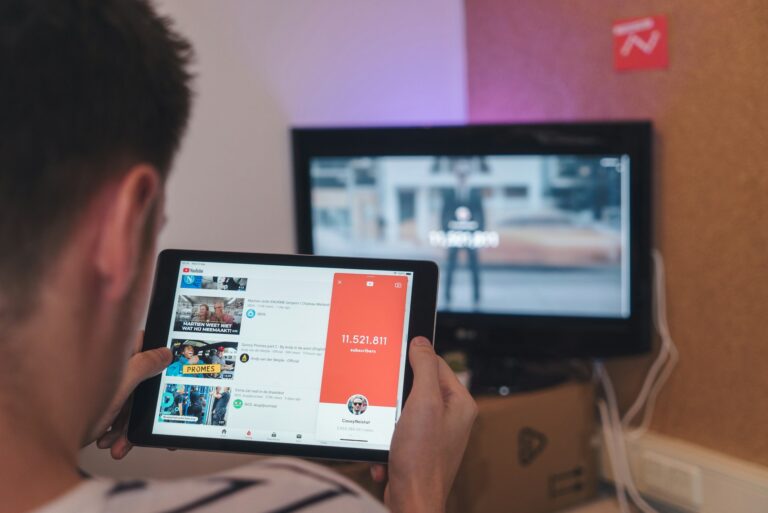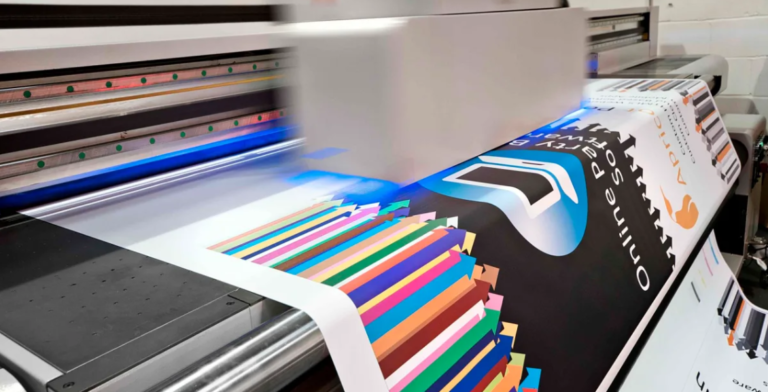As technology continues to evolve, the printing business is flourishing. For every firm, new printing technology has improved outputs that are quicker and better. You no longer need to wait hours to have the finished printouts in your hands. Printing clothes, papers, and other items quickly at cheaper costs and faster speeds is made possible by digital printing.
Digital printing has therefore played a major role in changing bespoke designs. I'm providing a detailed guide on the role of digital printing in the custom advertising printing industry, so it will be easy for you to comprehend why it is necessary. Let's start.
What Is Digital Printing – How It Works
Transferring digital information directly onto different media surfaces, such as paper, cloth, or vinyl, is the practice of digital printing. Due to this technology, high-quality prints have become pretty easy to make, which enables smooth connections with computer systems. There is a complete process for digital printing that involves the following steps:
File Preparation
The preparation of the digital file containing the artwork or design to be printed is the first stage in digital printing. Using graphic design tools, the file may be generated or altered to provide the desired visual result.
Sending the File to the Printer
After it is complete, the file is electronically transferred to the digital printer. The printer translates the digital file and gets it ready to print.
RIP (Raster Image Processing)
RIP is the process of converting the digital file into a format that the printer can understand. During this step, the file is translated into a series of dots (pixels) that the printer will reproduce on the printing surface.
Printing Process
Then, the printing process starts. The fundamental concept involves transferring ink or toner onto the printing surface to create the desired image. The process varies depending on the type of digital printing technology used.
Types of Digital Printing:
Here are the major types of digital printing.
Dye Sublimation Printing
Dye sublimation printing is a type of digital printing in which heat is used to transfer dye to materials that have been specifically coated. This includes polyester textiles or ceramic surfaces. The dye is changed into a gas by the heat and then binds with the fibers of the cloth to produce vivid and long-lasting prints.
Solvent Printing
Solvent printing is renowned for its vivid colors and durable effects. Solvent-based inks used for this sort of printing have good outdoor durability and are water-resistant. It is used for large-format printing like billboards, vehicle wraps, and banners.
Heat Transfer Printing
Digital printing technique known as "heat transfer printing" is mostly utilized for printing on cloth. It entails printing the design using a digital printer onto a specific transfer paper, which is then heated and pressed onto the fabric to transfer the design. Personalized clothing, accessories, and promotional items are frequently produced using this method.
Eco-Solvent Printing
In contrast to solvent printing, eco-solvent printing employs solvent-based inks that are less volatile organic compound (VOC)-intensive. It is appropriate for both indoor and outdoor applications and is frequently used for car graphics, decals, and signs.
UV Curing Printing
UV-curable inks are used in UV curing printing, which uses UV light to quickly dry and cure the ink. This technique produces prints with amazing color vibrancy and durability without the need for drying time. Uses for UV-curing printing include packaging, point-of-purchase displays, and signage.
Latex Printing
Latex printing involves using water-based latex inks that are cured using heat. This method offers excellent color reproduction, durability, and environmental benefits. It is commonly used for banners, indoor and outdoor signage, and wall graphics.
What Are The Advantages Of Digital Printing
Digital printing is a fast and efficient technique that has increasing demand in today’s world. It provides a remarkable level of versatility and customization options for the businesses so that they can personalize their advertising prints to cater to specific target audiences. There are also several other benefits, some of which are listed below.
Speed and Efficiency
Digital printing offers unparalleled speed and efficiency compared to traditional printing methods. With no setup time required for plates or lengthy drying processes, digital printers can produce prints in a fraction of the time, making it ideal for time-sensitive advertising campaigns.
On-demand Printing
Digital printing allows for on-demand printing, meaning prints can be produced as needed. Large print runs are no longer necessary, and firms may better manage their inventories as a result. It also reduces the risk of outdated or wasted prints, as materials can be easily updated and reprinted as required.
Quick Prototyping and Testing
Digital printing allows for rapid prototyping and testing of designs. Businesses can create small batches of prints to evaluate their effectiveness before committing to larger production runs.
Cost-effectiveness
Digital printing enables the cost-effective manufacturing of lower print volumes, in contrast to traditional printing, which sometimes necessitates enormous print runs. This capability enables companies of all sizes to purchase personalized advertising materials without worrying about their costs.
Where to Use Digital Printing
The use of digital printing has found its place in several applications. Mostly this type of printing is used to print t-shirts, labels, banners and other such things. To give you a better idea, here I will discuss where this type of printing can be used.
Dye Sublimation Printing
· Apparel and Textiles: Activewear, sportswear, and other clothing made of fabric are often made via dye sublimation. The process allows for vibrant, full-color prints that do not compromise the breathability or comfort of the fabric.
· Tents And Fabric Displays: Dye sublimation printing is widely used for producing custom-designed tents and fabric displays for trade shows, exhibitions, and events. The process allows for high-resolution printing on various fabric materials, resulting in eye-catching and personalized displays.
· Flags: Dye sublimation printing is popular for creating vibrant and durable flags used for outdoor events, sports, or corporate branding. Even when exposed to severe weather, the method maintains outstanding color penetration and print permanence.
· Home Décor and Interior Design: Dye sublimation printing is used to create customized home décor items, such as pillows, curtains, wall hangings, and tablecloths. It offers the ability to reproduce intricate designs and vibrant colors on various fabric materials.
Solvent Printing & Eco-Solvent Printing
· PVC Stickers and Labels: Both solvent and eco-solvent printing are commonly used for creating PVC stickers and labels. These can be applied to products, vehicles, packaging, or used for branding purposes.
· PVC Banners: Solvent and eco-solvent printing are well-suited for producing large-format PVC banners used for outdoor advertising, events, and promotions. The durability and weather resistance of solvent inks make them ideal for long-lasting outdoor displays.
Why Choose Everest Prints for Digital Printing?
· Experienced Supplier: They have a comprehensive awareness of their clients' demands and expectations thanks to their close to ten years of expertise in the custom printing sector.
· Free Sample: For bulk orders, this supplier provides free samples, including shipping, allowing you to assess the quality and suitability of their products.
· Competitive Pricing: They offer factory prices, ensuring that you get the best value for your investment.
· Quality Warranty: They stand behind the quality of our products and offer a 1-year warranty for most of their products.
· Design Assistance: They provide professional design services at a low cost, ensuring that your prints have a visually appealing and impactful design.
· Full-Color Printing: They understand the power of vibrant colors in attracting customers, and their full-color printing ensures that your prints make a lasting impression.
· High Resolution: They utilize printers with resolutions ranging from 360 to 1440 dpi, ensuring that your graphics are printed with clarity and detail.
· Custom Printing: They can print any graphics you desire on your products, allowing for complete customization and personalized branding.
· Varied Product Lines: With over 30 different advertising products available, they are a one-stop destination for all your printing needs.
· Large Format Printing: Their capabilities include large format printing, with the ability to create flags as large as 80x33 ft (24x10 meters), making your brand visible from a distance.
· Worldwide Shipping: They offer shipping to most countries, including remote islands, ensuring that your prints can reach you wherever you are located.
The role of digital printing in the custom advertising printing industry is transformative and indispensable. With digital printing, businesses can personalize and customize their advertising prints, tailoring them to individual customers and creating impactful marketing materials. The ability to produce prints on-demand and with quick turnaround times enhances efficiency and reduces waste.
Moreover, digital printing enables businesses to explore innovative design options and incorporate vibrant colors, captivating their target audience. As the custom advertising industry continues to evolve, digital printing remains at the forefront, revolutionizing the way businesses communicate and engage with their customers.





